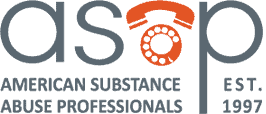As 2022 comes to a close, many carriers may be conducting end-of-the-year reviews on various aspects of their organizations. What worked in 2022? What needs some fine-tuning? And does anything need an overhaul?
In January 2020, the Federal Motor Carrier Safety Administration (FMCSA) officially launched its Commercial Driver’s License Drug and Alcohol Clearinghouse. As a result, a drug and alcohol testing program took on added importance for carriers. As carriers conduct operational reviews, an analysis of their drug and alcohol testing programs should be on the list.
Carriers are required to query the clearinghouse before hiring a driver, but simply complying with the clearinghouse rules is only one part of a successful drug and alcohol testing program. Drug violations for truck drivers increased 10.2% in 2021 over 2020 in the first full-year data comparison under the clearinghouse (including test refusals as actual positive drug tests increased 3.1%), while alcohol violations increased 26.7% in 2020 compared to 2021, according to FMCSA data.
In 2021, the top 30 FMCSA violations included a number of drug- and alcohol-related issues, including failing to request a pre-employment query of the clearinghouse, failing to request an annual query of the clearinghouse and failing to register with the clearinghouse — violations 382.701(a), 382.701(b)(1), and 382.711(b), respectively.
Fleets have also been found to be using a driver before the motor carrier has received a negative pre-employment controlled substance test result [382.301(a)]; failing to perform a random test at an applicable annual rate [382.305(b)(1) –(b)(2)]; and failing to get a “reasonable suspicion” designee the required 60-minute training (382.603).
Clearly, drug and alcohol use and testing program compliance remain concerns for carriers. Kathy Close, editor of transport safety for compliance specialists J. J. Keller & Associates, advised carriers to perform a self-audit and review their 2022 performance as it relates to drug and alcohol compliance, and address areas of concern.
Managing drug and alcohol programs and compliance can be tricky, with a number of areas that can trip up otherwise compliant fleets. There are three approaches carriers can take: in-house management, outsourced management or hybrid management. Regardless of the approach, Close provided a road map for prepping a drug and alcohol testing program for 2023.
1. Designated employer representative (DER)
A DER is the point person for dealing with a carrier’s service agents, including clinics, labs, medical review officers (MRO), substance abuse professionals (SAP), consortia/third-party administrators (C/TPA) and drivers.
During the evaluation, review the performance of the current DER. Underperformance could be due to several factors, including a lack of qualification for the position or too many other responsibilities within the company. When conducting the review, it may be determined the current DER can succeed with additional training on his or her specific role and/or DOT regulations.
The carrier may also choose to change the department or individual responsible for the drug and alcohol testing program. FMCSA does not specify which department (safety, human resources, operations, etc.) or individual should hold responsibility, so the carrier should consider their preference and/or the skills of the individual when making the choice.
2. Program administration
When it comes to administering a drug and alcohol testing program, a carrier needs to ensure it is in the appropriate department with the appropriate person in charge. Naming a DER is one step toward this, but while that person may serve as program administrator, he or she doesn’t necessarily have to.
Whoever administers the program, and whichever department it resides within, must know the rules. Does the administrator need training on policies and regulations? Is refresher training needed? Is there enough time capacity to properly manage the program?
“If you are finding your program is noncompliant or is not running efficiently, it may be time to rethink your choice of administrator or look into training or retraining the person,” Close said. “And if you find your operation just can’t keep up on this administrative process, is it time to look to a third party to help you out?”
3. Reasonable suspicion testing
Carriers can require a driver be tested for drugs and alcohol if they have reasonable suspicion the driver may be violating regulations around substance use. However, the carrier must have a trained supervisor administer this portion of the program. That supervisor must receive required training as outlined in Part 382.603. This includes 60 minutes of training on drugs and another 60 minutes on alcohol. The administrator must also know what applicable safety regulations apply (382.307) and, perhaps most importantly, have the necessary skill set and personality to perform the role.
“As you manage your DOT testing program, it’s OK to say that someone is not a fit for a specific role. For instance, a supervisor who has shown to be apprehensive about approaching a potentially impaired driver may not be the best fit as a designated supervisor to request a reasonable suspicion test,” Close said.
Managing this part of the program can be tricky for large carriers or those with multiple locations. In some instances, additional trained supervisors may be necessary to cover additional shifts or locations. Close said a carrier may consider supervisors from other departments as possibilities to provide additional or backup coverage, including members of the HR team.
4. Meeting annual testing rates
Random drug and alcohol testing is required by the DOT for drivers performing safety-sensitive operations. The rate of these random tests are set on Jan. 1 by the administrator of the appropriate DOT agency. For the 2022 calendar year, the FMCSA random testing rate was 50% for drugs and 10% for alcohol.
Carriers can easily fall short of these rates if careful monitoring of testing is not done. Canceled or missed tests, testing at the minimum required or a lack of tracking of either tests or the number of driving positions are common reasons for falling short.
In these cases, Close advised testing at a rate above the minimum throughout the year, monitoring completed tests, increasing the testing rate if there are a number of missed tests and creating policies and procedures to manage the random selection of testing participants.
Close added that the time frame of the testing cycle matters as well. Shorter cycles lead to less time to notify drivers and often result in fewer drivers being tested. Longer test cycles, such as on a quarterly basis, provide more time for planning and increase the pool of drivers to be tested.
5. Manage service agent relationships
Many carriers utilize service agents (clinics, labs, MROs, SAPs or C/TPAs) to manage some or all of their drug and alcohol testing programs. But the carrier is ultimately responsible for the program and can be fined or cited for mistakes made by a service agent. The end of the year is a good time to review service agent contracts and ensure they are providing what the carrier needs and if not, consider looking for new agents.
What is needed depends on the provider. For instance, do collection sites offer all the services needed? Are they training properly and offer reasonable rates? Do they make repeated mistakes that result in canceled tests? Is the MRO compliant and properly qualified? Is the lab still on the Department of Health and Human Services’ approved list?
Close said carriers should also review the relationship with the C/TPA, particularly what parts of the carrier’s program is the C/TPA responsible for and is it managing it compliantly and communicating efficiently? She noted that there are no regulations surrounding training or credentials for a C/TPA, so it is important the carrier review this relationship because, as mentioned, the carrier is held responsible by DOT.
“If your current provider is not doing what they are hired to do, you may want to look elsewhere since it will impact your bottom line and could affect your safety rating or defense in the event of a nuclear verdict,” Close said.
6. Program review
Carriers should periodically review their DOT drug and alcohol testing programs to ensure they meet both internal requirements and any regulatory requirements, including changes. Drivers should also be notified anytime there is a change to policy and procedures, Close said. This includes when the DER changes. Drivers should also be notified of the consequences for engaging in prohibited behavior, including violations. Will the circumstance lead to termination or other discipline? Can drivers take a retest for a negative diluted sample, for instance?
Regulatory changes should also be communicated within the organization and to service agents. For example, effective Jan. 6, 2023, the safety performance history records request will no longer ask former DOT-regulated employers for DOT testing history. These questions should be removed from the form. The clearinghouse query is the sole means of learning of FMCSA violations under Part 382, Close said.
Close noted that self-audits are a good practice for carriers to identify any issues or areas that can be improved upon. In some cases, simple checklists may be sufficient, but more attention may be needed in some areas, either through internal processes or through the use of third-party services.
Many of the common FMCSA violations (pre-employment tasks such as clearinghouse queries, testing and issuing of policy/education materials; generating accurate driver rosters to meet random testing rates; and tracking all tests, not just random tests) are avoidable with properly managed and administered drug and alcohol testing programs.
Freight Waves. (Dec. 2022). Prep Drug and Alcohol Testing Programs for 2023 retrieved from https://www.freightwaves.com/news/prep-drug-and-alcohol-testing-programs-for-2023





